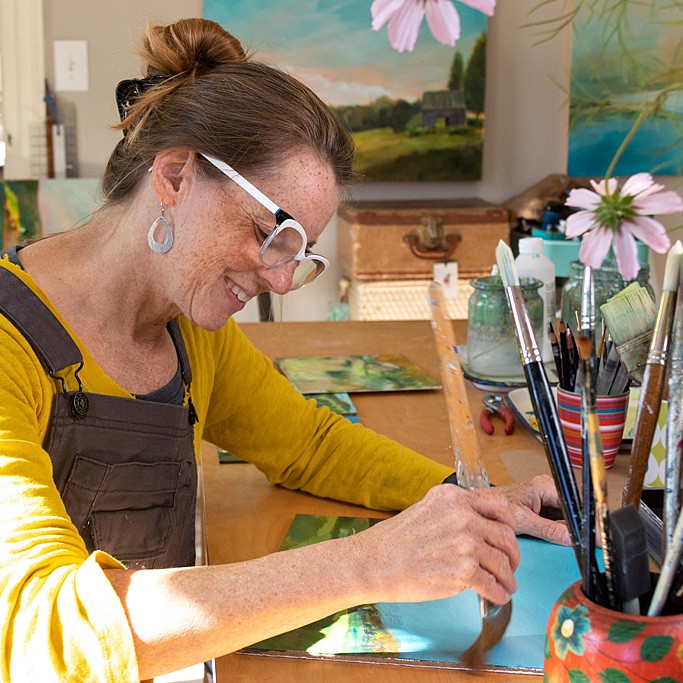We were lucky to catch up with Sue Schlabach recently and have shared our conversation below.
Hi Sue, thanks for joining us today. Learning the craft is often a unique journey from every creative – we’d love to hear about your journey and if knowing what you know now, you would have done anything differently to speed up the learning process.
I’ve spent my lifetime (at this writing 56 years) learning to make art: sketching, manipulating color, cutting and building, stitching, photographing and painting.
But in the past 12 months I’ve put what I learned to the test. I was laid off, without warning in January 2023. I was scared, confused and angry at first. And then, quite magically, I felt set free of the Monday to Friday constraints of a desk job.
In the first months I tried to do the creative work I always dreamed of doing all day long. But first I had to rigorously focus on UN-learning all the day-to-day habits that made me effective in a desk job—responsiveness to emails, putting meetings on calendars, scheduling my week. It was harder than I could have imagined. My job as Creative Director involved creativity, but it was more about great executive functioning skills than building my day around creative efforts and making creative work.
I learned to put the iPhone in another room. I unlearned starting my day in the in-box. With the help of a friend I completely dismantled my home studio/office and re-made it a studio and NOT an office. The rearranging focused on the easel, the painting table, the creative books and the views from the windows. I wasn’t always successful in ignoring the phone. I did design, photography, writing and branding in addition to painting, so I had to find a way to allow the digital tools to be part of my creative work.
The best thing I could do in learning the new way of working was to own it as my work. My true work. I set up an LLC and took on projects. I made and sold paintings. I made paintings I didn’t like, along with paintings that I did. I shared pieces I was struggling with along with pieces that I loved and learned from feedback that sometimes what I didn’t feel was working resonated with a lot of people I knew and trusted.
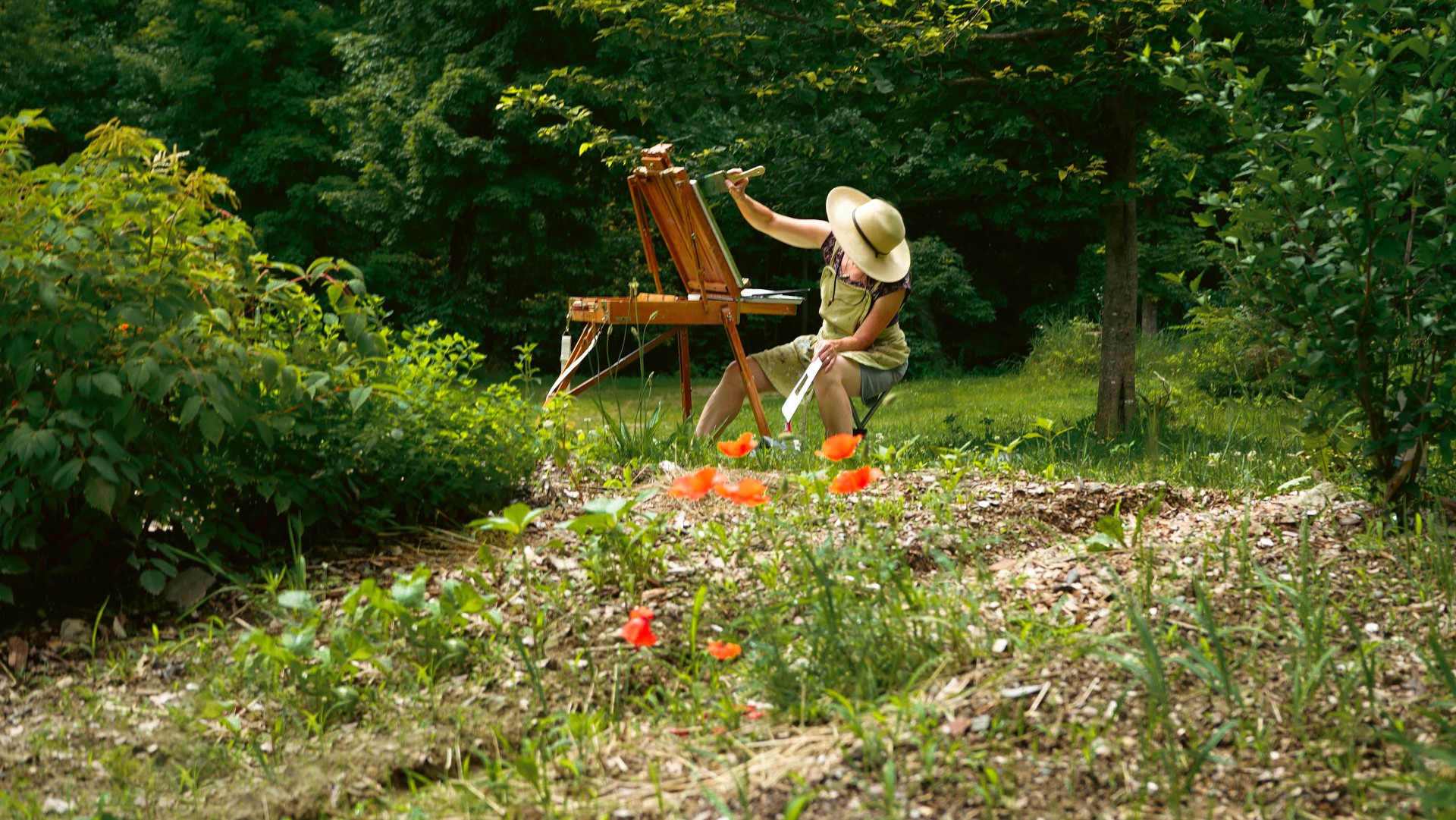
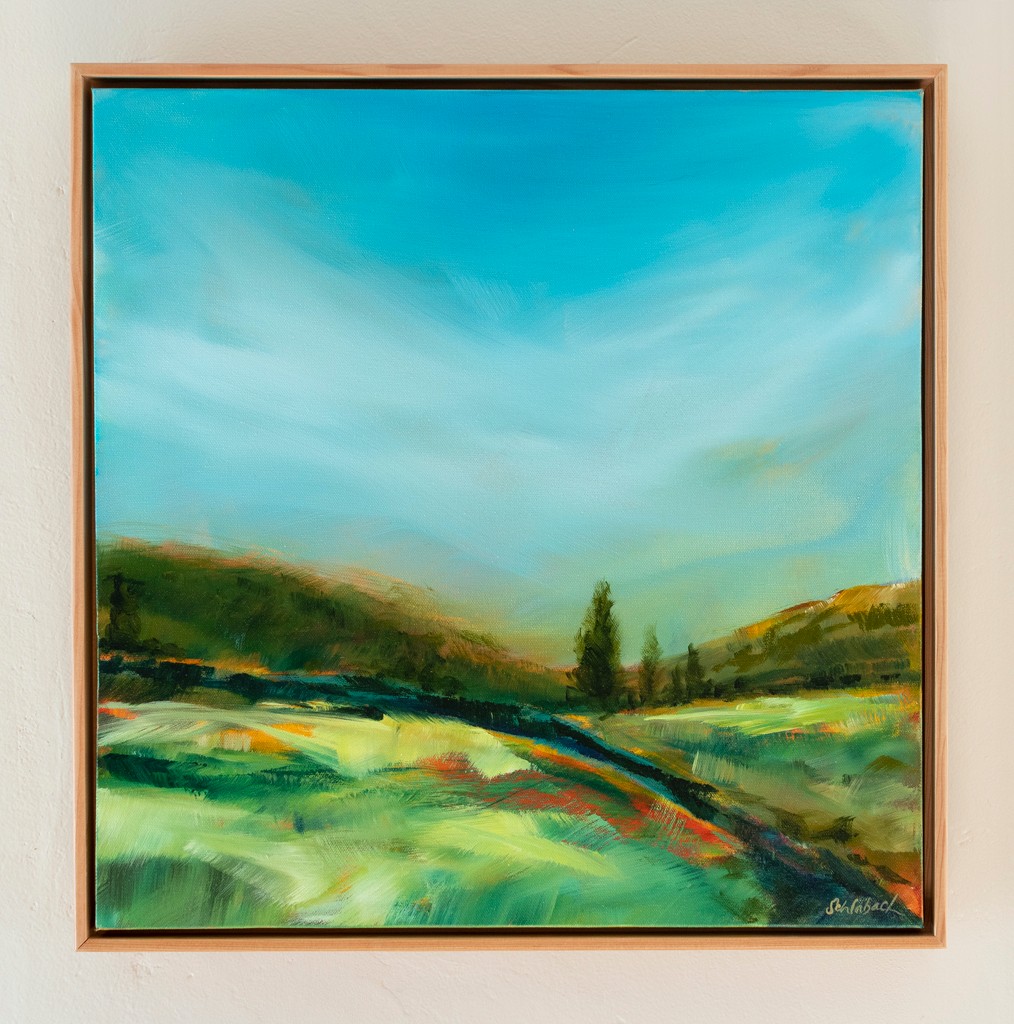
As always, we appreciate you sharing your insights and we’ve got a few more questions for you, but before we get to all of that can you take a minute to introduce yourself and give our readers some of your back background and context?
In 2023 I became a full-time independent creative professional, with painting at the core, and client work in photography, branding, visual storytelling, teaching and some creative mentoring in the package. I keep learning to be an artist. It’s a practice that keeps evolving as my own life changes. I love teaching and helping others tap into their creative wells. I am also a gardener and am involved with a flax-to-linen venture in my small Vermont town.
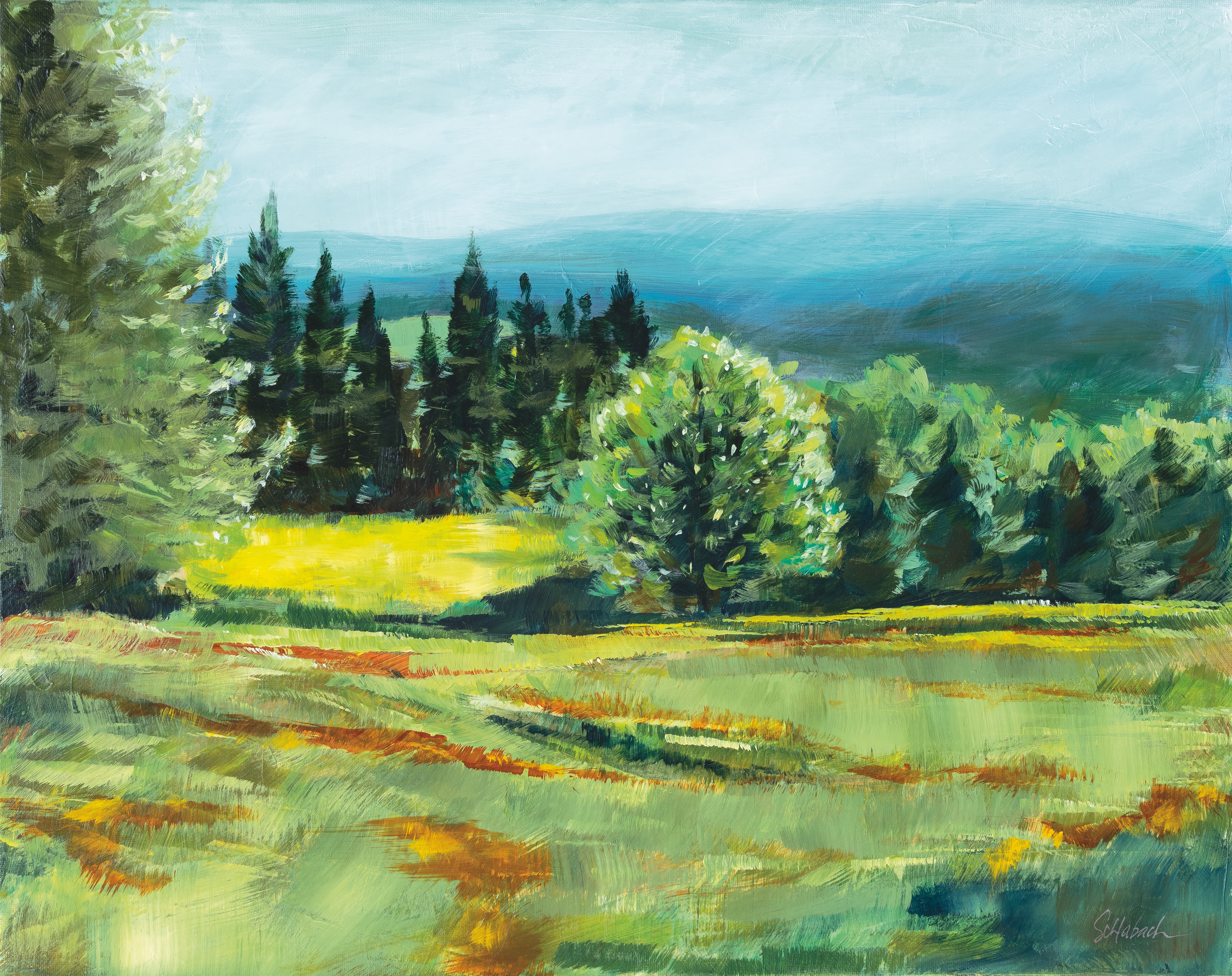
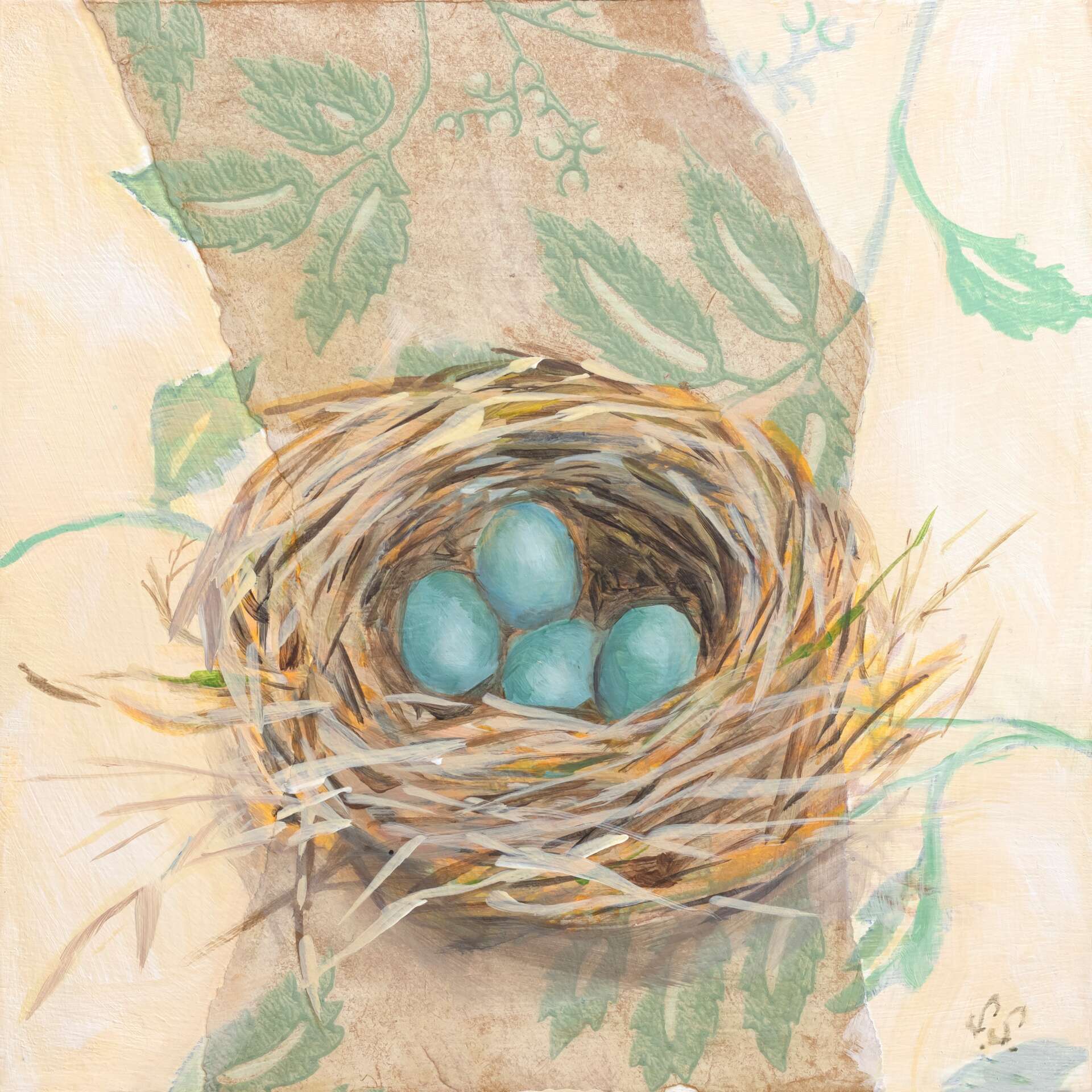
In your view, what can society to do to best support artists, creatives and a thriving creative ecosystem?
Money is the driver and incentive in our culture, but the value of creative work is so much bigger than economies. If—from a small age—children learned that their own creative impulses and ideas would give them a rich inner life, this value could give them so many skills for problem-solving the hardships of life as they grow.
Living a little outside the mainstream, and learning to not fear their own individual specialness, helps an artist hone their craft and not assimilate to what is trendy. A thriving creative ecosystem allows people of many disciplines to share and feed on each other’s ideas and skills. And those who think of themselves as non creative can gain in this environment too. Creativity—at its core—is problem solving, and there are many problems to be solved. A creative alliance within government could look at huge social problems and offer solutions that come from outside the box.
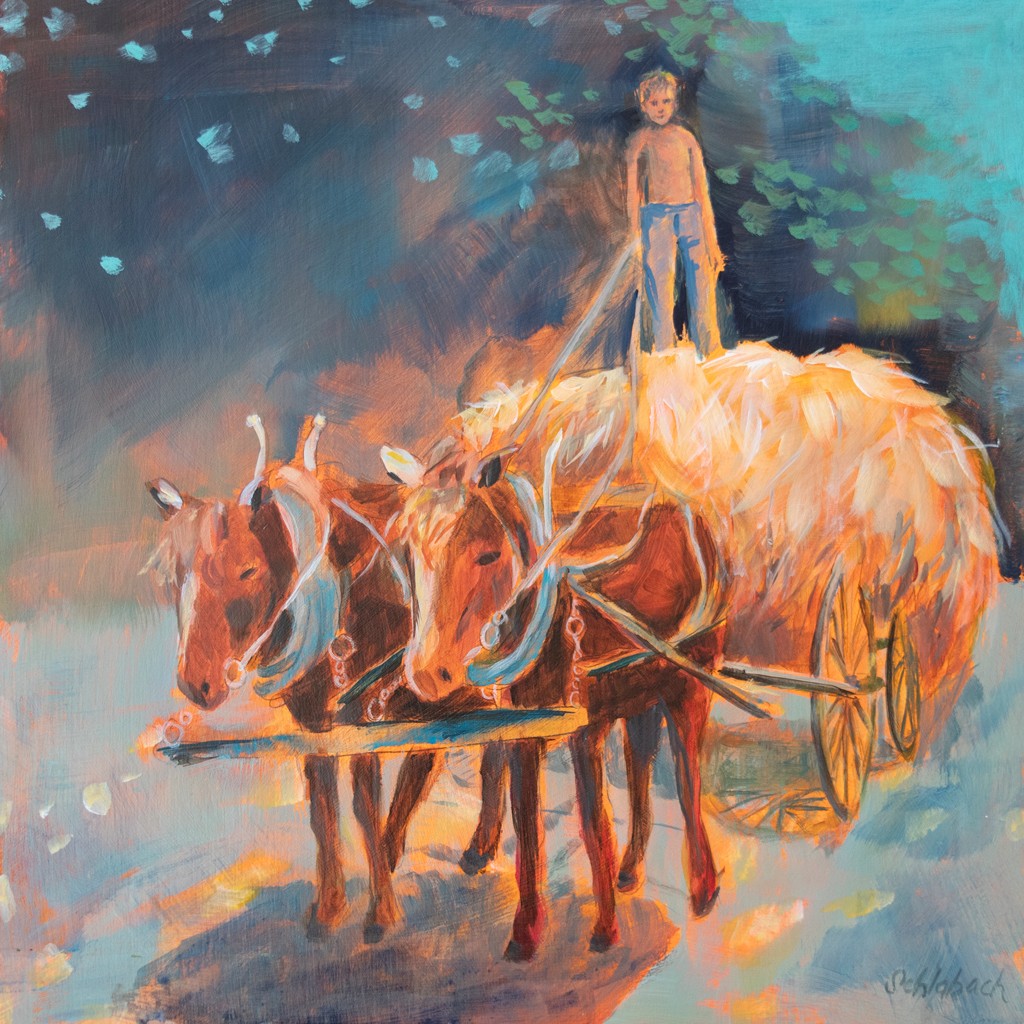
We often hear about learning lessons – but just as important is unlearning lessons. Have you ever had to unlearn a lesson?
When I started my business I was freshly laid off and anxious about replacing my professional income. I let that anxiety control how I worked and accepted any job that came my way. In those early months I found myself working outside of boundaries: days, evenings, weekends. I didn’t rest easily and I struggled to make time for the most creative work I do: painting and non-assignment photography.
Saying yes to everything is what we people pleasers do. I was used to saying yes in my job, where that was required to keep clients and my boss happy. But I was now my own boss, and it was a revelation when I first decided I could say no to a project that felt entirely like busy-work, and would take time away from the work I need to do to stay fresh and connected to my creative core.
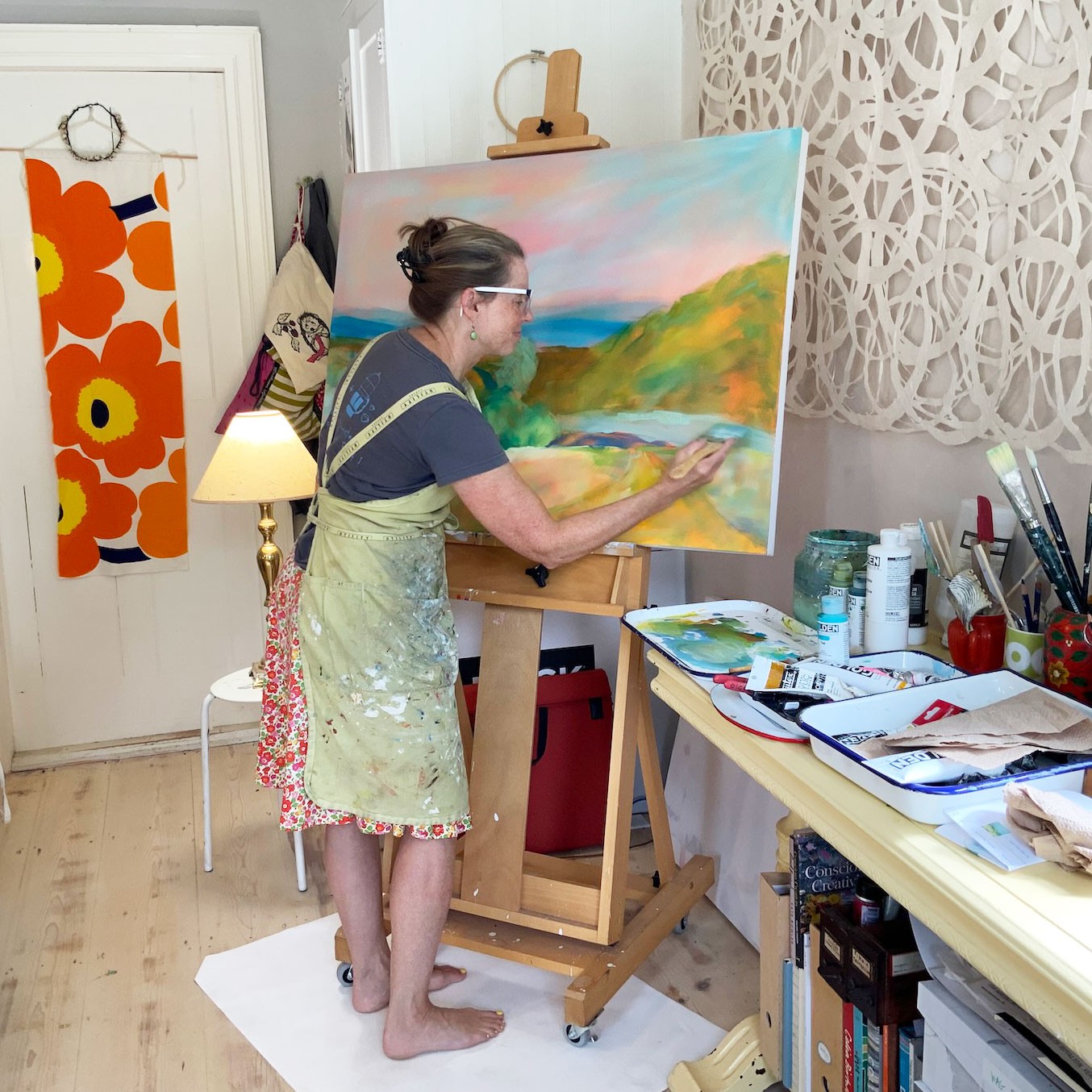
Contact Info:
- Website: https://sueschlabach.com/
- Instagram: https://www.instagram.com/sueschlabachcreative/
- Facebook: https://www.facebook.com/sueschlabachart
- Other: Pinterest: https://www.pinterest.com/sues/
Image Credits
The outdoor painting one (where I’m wearing a straw hat) was taken at The Sable Project by Jaylyn McFadden https://shealynmcfadden.com/ Jaylyn is the correct spelling (different from their URL). I have permission to use the image. All the others I took of myself with a timer.


